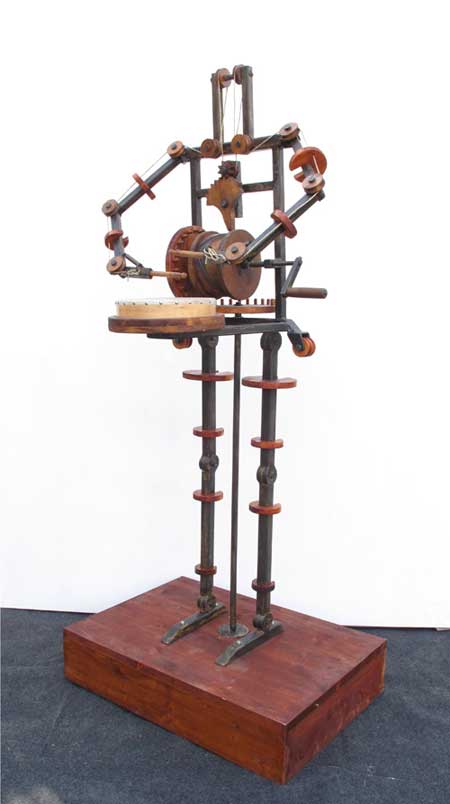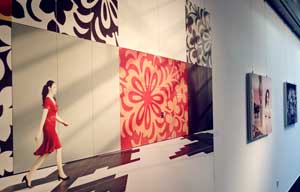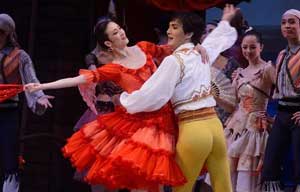

 |
|
The drum-playing robot is based on the design Da Vinci drew on several pages. Photo provided to China Daily |
Leonardo da Vinci is best known in China as an artist for his masterpiece Mona Lisa, but an exhibition at the Shanghai Science and Technology Museum shows he is also a genius in math, mechanics, biology, astronomy and many other domains.
The exhibition features 80 replicas of the master's mechanical and robotic inventions, 14 anatomical models based on his drawings, 16 reproductions of his well-known paintings and four copies of his manuscripts.
The Renaissance icon of the 1400s has left to the world more than 14,000 pages of manuscripts involving a wide range of scientific topics he had studied from how birds fly to the structure of the kidney. Hundreds of years later, many of his technical fantasies - such as the bicycle and helicopter - are now a reality.
The exhibits are some of his inventions reproduced by renowned Da Vinci experts using the same techniques and materials from the Renaissance period based on the manuscripts.
A remarkable exhibit is a robot that can play the drums, which involved much ingenuity in mechanics and engineering. Rotate a handle and, with the motions of gears, ropes control the limb to play the drums. According to the organizer, Da Vinci did not design the robot on one piece of paper, but drew the components on several pages. Researchers only decided it was a robot in 2010.
Another famous design is an underwater breathing apparatus that resembles modern scuba diving equipment. It has flexible breathing tubes, a sack to collect excess water, a buoy to keep openings above water and a water-proof mask with glass goggles. The design of a parachute is a pyramid-shape device made up with pieces of linen. On the manuscript, the master wrote: "With the device, anyone can reach the land safely from a certain height."
If you go:
Shanghai Science and Technology Museum 9 am-5 pm, until Dec 25 except Mondays. 2000 Century Ave, Pudong New Area, Shanghai.
021-6862-2000.



